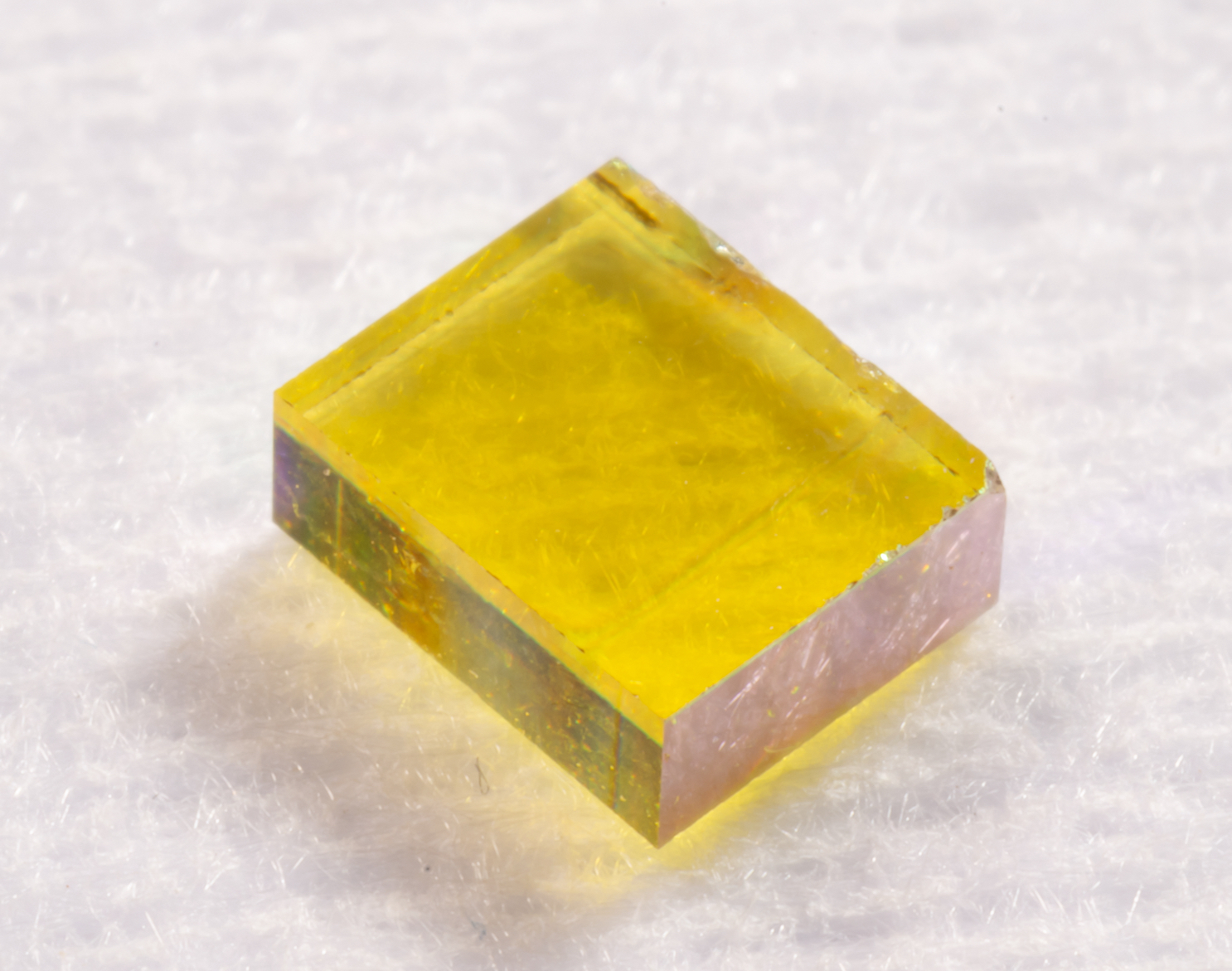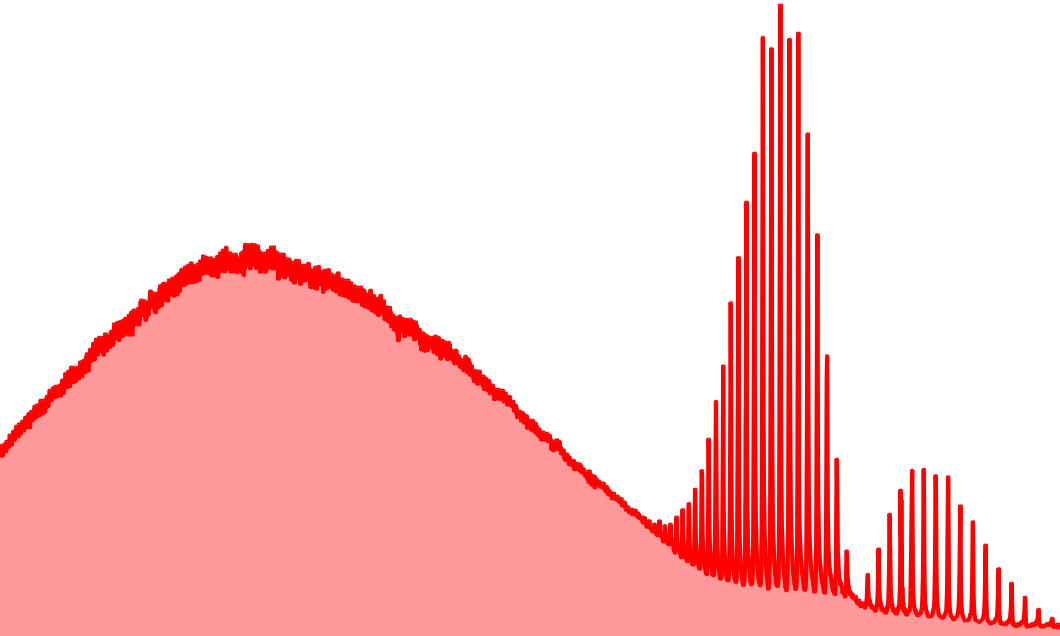Research
Introduction : Mid-infrared ultrafast lasers
Femtosecond and picosecond lasers are high-speed lasers that generate optical pulses with extremely short time widths.
These lasers are also called mode-locked lasers because they have coherence between frequencies by means of a mode-locking method.
Typical features of ultrashort pulsed lasers include:
extremely high peak powers on the order of terawatts can be realized because the energy is localized in a very short time region with a time width of a few femtoseconds,
a broadband laser frequency spectrum on the order of terahertz in the optical frequency range, and a high peak power in the radio frequency range.
In the optical frequency range, the laser frequency spectrum has a broad bandwidth on the order of terahertz, and in the radio frequency range, high repetition rates in the megahertz to gigahertz range can be realized.
Mode-locked lasers have become an indispensable tool at the forefront of recent fundamental research and engineering,
enabling microspectroscopy using multiphoton excitation, femtosecond time-resolved observation of physical phenomena, terabit ultrafast communications, high-speed ignition fusion, high-order harmonic generation, attosecond pulse generation, ultra-high precision optical frequency measurement and optical interference tomography.
These have become indispensable tools in recent years at the forefront of basic research and engineering.
I am conducting research and development mainly on femtosecond lasers in the mid-infrared region.
Molecular vibrations show resonance frequencies in the mid-infrared region (wavelength range 2 - 20 µm) that reflect the individual converted masses and coupling constants,
making the mid-infrared region an important wavelength region that has long been called the "fingerprint region of molecules.
Spectroscopy using thermal light sources has been widely used to detect and identify molecules, and has been applied to environmental and medical measurements.
The excellent properties of laser light have enabled highly sensitive molecular detection, remote gas detection, and microscopic measurement of molecular materials.
In recent years, by taking advantage of the excellent inter-frequency coherence of femtosecond pulsed lasers in the mid-infrared region,
advanced vibrational spectroscopy such as frequency comb spectroscopy, background-free spectroscopy, and time-resolved spectroscopy have been actively investigated.
In gas-based higher-order harmonic generation, the cutoff side is beginning to be recognized both theoretically and experimentally,
and it is becoming clear that driving with a long-wavelength laser is effective for generating shorter-wavelength harmonics.
In solid-state high-order harmonic generation and photoelectron emission, femtosecond pulsed lasers in the mid-infrared region have been reported to be useful from the experimental viewpoint of being able to apply a strong electric field while avoiding sample destruction by multiphoton excitation.
Other applications of mid-infrared femtosecond pulsed lasers include optical processing of resin and semiconductor materials, and long-wavelength optical communications.
As described above, mid-infrared femtosecond pulsed lasers are rapidly gaining attention in various fields, including molecular vibration spectroscopy.
Reference
岡﨑 大樹,芦原 聡,
“Cr:ZnSを用いた中赤外モード同期レーザーの開発”,
レーザー研究 「新材料による中赤外レーザー」,vol. 49, No.7, pp.390-395 (2021).
Development of femtosecond Cr:ZnS laser system working around 2.3 µm (IIS UTokyo, Ashihara Lab)


Mode-locked lasers, which oscillate directly in the mid-infrared region without wavelength conversion, have excellent system simplicity, stability, and energy utilization efficiency, and can realize highly repetitive pulse trains.
In addition, when further red frequency conversion is required, the Manley-Rowe law and the ability to use materials with large nonlinear susceptibility make it possible to achieve highly efficient frequency conversion.
Compared to rare-earth ion-based laser materials, Cr:ZnS, the laser crystal of interest in this study, exhibits extremely broad fluorescence in the mid-infrared region due to transition metal ions.
In addition, Cr:ZnS has high potential for high-power ultrashort pulse oscillation because it is a solid-state laser material, and compared to iron-ion-based materials, it can oscillate at room temperature and is expected to operate stably.
In this study, in collaboration with the Maruyama-Chitoseki Laboratory at the University of Tokyo, Professor Esko Kauppinen of Aalto University, and Canatu,
we have investigated the linear absorption properties of single-walled carbon nanotubes (SWCNTs) with a large diameter that exhibit resonant absorption in the mid-infrared region.
We have demonstrated that SWCNTs with appropriate diameters are excellent saturable absorbers in the mid-infrared region.
By incorporating SWCNTs into a laser cavity, we succeeded in ultra-short pulse oscillation with a center wavelength of 2.3 µm and a time width of 30 fs,
and discovered a self-starting mechanism of pulse oscillation and a noise suppression mechanism unique to Cr:ZnS.
Reference
Daiki Okazaki, Ikki Morichika, Hayato Arai, Esko I. Kauppinen, Qiang Zhang, Anton Anisimov, Illka Varjos, Shohei Chiashi, Shigeo Maruyama, and Satoshi Ashihara,
“Ultrafast saturable absorption of large-diameter single-walled carbon nanotubes for passive mode-locking in the mid-infrared”,
Optics Express, Vol.28, No.14, pp.19997-20006 (2020).
Daiki Okazaki, Hayato Arai, Anton Anisimov, Esko I. Kauppinen, Shohei Chiashi, Shigeo Maruyama, Norihito Saito, and Satoshi Ashihara,
“Self-starting mode-locked Cr:ZnS laser using single-walled carbon nanotubes with resonant absorption at 2.4 um”,
Optics Letters, Vol.44, No.7, pp.1750-1753 (2019).
Tobias Kugel, Daiki Okazaki, Ko Arai, and Satoshi Ashihara, “Direct electric-field reconstruction of few-cycle mid-infrared pulses in the nanojoule energy range”, Applied Optics, Vol. 61, No.4, pp. 1076-1081 (2022).
Xiangbao Bu, Daiki Okazaki, and Satoshi Ashihara,
“Inherent intensity noise suppression in a mode-locked polycrystalline Cr:ZnS oscillator”,
Optics Express, Vol. 30, No.6, pp. 8517-8525 (2022).
Development of broadband coherent light source with narrowband specral peaks (IIS UTokyo, Ashihara Lab)

It is known that the presence of narrow linewidth absorption in a mode-locked laser cavity causes a dispersive spectral modulation at the resonance frequency that reflects the phase part of the molecular absorption.
In the case of Cr:ZnS lasers, narrow linewidth spectral modulation in the cavity is observed due to absorption from water vapor in the atmosphere.
In this study, by applying this phenomenon and the spectral transition in the laser cavity, we succeeded in superimposing a narrow linewidth spectral peak structure at a specific position in the optical cavity in which a gas cell was intentionally inserted.
Numerical simulations of mode-locked oscillation considering the spectral evolution in the cavity revealed that the frequency dependence of the self-phase modulation enables the formation of a narrow peak structure at the bottom of the laser spectrum.
The realized light source is a broadband mode-locked pulse light source with improved spectral density at molecular resonance frequencies,
and is expected to be applied to strong excitation of specific molecular species and as a new optical frequency standard in the mid-infrared region using molecular vibration.
Reference
Daiki Okazaki, Wenqing Song, Ikki Morichika, and Satoshi Ashihara,
“Mode-locked laser oscillation with spectral peaks at molecular rovibrational transition lines”,
Optics Letters, Vol.47, No.23, pp.6077-6080 (2022).